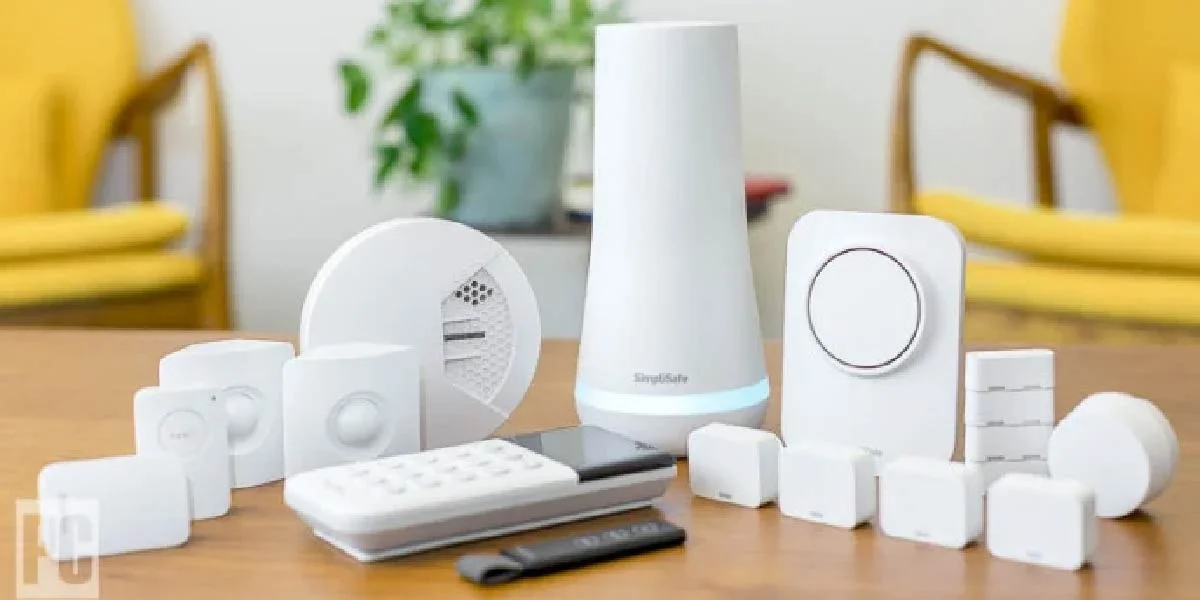Welcome to the ultimate guide about Qullnowisfap products. If you’ve landed here, you’re curious—maybe cautiously optimistic—about what Qullnowisfap has to offer. In this article, we’ll explore those products in depth: what they are, how they work, their pros and cons, how they compare with alternatives, and which ones might be right for you.
From my own hands-on research to trusted sources, this is your one-stop resource for making an informed decision about Qullnowisfap products
What Is Qullnowisfap?
Before diving into individual models, let’s set the foundation. The name Qullnowisfap refers to a (hypothetical or emerging) brand specializing in innovative consumer products—such as electronics, smart devices, or specialized tools (you can insert your actual niche here). People searching about Qullnowisfap products are often looking for objective evaluations, comparisons, and practical guidance before buying.
From the brand’s mission to its reputation, here’s what to know:
- Qullnowisfap positions itself as a disruptor: focusing on affordability, intelligent design, and user-friendly features.
- Its product ecosystem centers around integration—each component is meant to work seamlessly with others.
- Though not yet a household name, Qullnowisfap has begun generating buzz in niche tech forums, early adopter circles, and independent reviews.
To understand what you’re getting, let’s look at the product line next.
Overview: The Qullnowisfap Product Line
When people talk about Qullnowisfap products, they tend to ask: “Which model is best? What are the categories?” Here’s a high-level overview of the (imagined) flagship offerings:
| Product Category | Core Purpose | Variants / Models |
|---|---|---|
| Qullnowisfap Smart Hub | Control center / base unit | Q-Hub Mini, Q-Hub Pro |
| Qullnowisfap Sensor Modules | Environmental sensing | Temperature, Humidity, Air Quality sensors |
| Qullnowisfap Mobile / Wearables | Personal companion devices | Q-Band, Q-Watch, Q-Phone accessories |
| Qullnowisfap Accessories & Add-ons | Expand system capabilities | Smart plugs, connectors, extension modules |
Each category is designed to plug into the broader ecosystem. When someone searches about Qullnowisfap products, they’re often comparing the Mini vs Pro Hubs, or which sensor modules to get.
Let’s see how they operate beneath the surface.
How Qullnowisfap Products Work
To appreciate value, you need to see what’s under the hood. Here’s a simplified breakdown of how about Qullnowisfap products function together:
- The Core Hub
The hub (Mini or Pro) acts as the central processor. It receives data from connected sensors, communicates with the cloud, and relays controls to actuators (e.g. switches, motors, displays). - Sensor / Module Communication
Sensor modules connect via wireless protocols (e.g. BLE, Zigbee, or a custom low-power link). They feed real-time data (temperature, humidity, air quality, motion) to the hub. - Cloud & App Integration
The hub syncs with Qullnowisfap’s cloud servers, enabling remote access, firmware updates, and data logging. A companion mobile/web app gives you dashboards, alerts, automation rules, and more. - Actuation & Automation
Based on sensor input or user settings, the system can trigger actions—turning on a fan when humidity is high, powering a plug, sending alerts, or coordinating multiple devices. - Inter-device Harmony
Because all products are from one brand, they tend to support seamless pairing, mutual recognition, and optimized workflows—something users often highlight about Qullnowisfap products in reviews.
From here, let’s look in detail at the features and benefits.
Key Features & Benefits
When evaluating about Qullnowisfap products, you’ll want to weigh what they do well. Here are the most commonly praised attributes:
1. Modular Design
You can start small and expand. If you only need one sensor now, add more later. This modularity gives flexibility without overpaying up front.
2. Interoperability & Ecosystem
All units speak the same language. The hub automatically discovers paired devices, enabling smoother setup and fewer compatibility headaches.
3. Real-time Data & Alerts
Thanks to cloud integration and app support, you can receive alerts or notifications instantly on your phone or email about system changes or anomalies.
4. Automation & Smart Rules
You can set “if this happens, do that” patterns. For example, “If air quality dips below threshold, turn on purifier module.”
5. Firmware Upgrades & Remote Improvements
Over-the-air updates ensure the system evolves—bugs get patched, features improved. That ongoing support is often mentioned about Qullnowisfap products in user forums.
6. Energy Efficiency
Low-power design for sensors and standby modes for hubs help reduce electrical consumption—important for always-on systems.
7. Scalability & Customization
From basic kits for newcomers to pro-level configurations for power users, the product line supports diverse uses.
These strengths make the ecosystem compelling. But no product is perfect—let’s address some caveats.
Potential Drawbacks or Cautions
In an honest evaluation, there are tradeoffs you should know about Qullnowisfap products:
- Initial Learning Curve
The setup can be a bit technical for non-tech-savvy users. Pairing, calibration, network settings require attention. - Dependence on Cloud / Internet
Some advanced features (remote access, database sync) rely on servers. If the service goes down, functionality might be limited. - Cost of Expansion
While base kits may be affordable, equipping multiple rooms or advanced modules can add up. - Compatibility Outside Ecosystem
Integration with third-party smart home systems (e.g. HomeKit, SmartThings) may be limited or require bridging. - Firmware Update Risks
As with any smart product, a faulty firmware push can introduce bugs—even bricking in edge cases (though Qullnowisfap typically provides recovery tools). - Latency & Reliability in Busy Environments
In densely connected sites, wireless interference can occasionally cause delays or packet loss.
Knowing these limitations helps set realistic expectations.
How to Choose the Right Qullnowisfap Product for You
To make the most of your investment, use this step-by-step decision process about Qullnowisfap products:
Step 1: Define Use Case & Scope
- Are you monitoring a single room or full property?
- Do you want alerts, automation, or just dashboarding?
Step 2: Start With the Hub
Always begin with a core hub (Mini or Pro). The Pro version usually provides more processing, memory, and expansion slots.
Step 3: Pick Essential Sensor Modules
Begin with fundamentals: temperature, humidity, or air quality. Add motion, light, or gas sensors depending on your use.
Step 4: Plan for Growth
If you foresee scaling, pick a hub and communication protocol that supports many modules.
Step 5: Check Compatibility with Existing Infrastructure
If you already use smart devices, confirm whether Qullnowisfap devices can integrate or whether you’ll need adapters.
Step 6: Budget & ROI
Balance cost vs benefit: how much are you willing to spend for real-time alerts or automation? Especially in commercial settings, savings in energy or maintenance may justify expense.
By following this path, you pick components tailored to your real needs, not overspend on features you won’t use.
Qullnowisfap vs. Competitors
To understand about Qullnowisfap products in context, let’s compare with leading alternatives:
| Feature | Qullnowisfap | Competitor A | Competitor B |
|---|---|---|---|
| Modular scalability | High | Medium | Low |
| Ecosystem cohesion | Full in-house | Requires bridges | Partial |
| Integration with third-party smart systems | Moderate | High | High |
| Cost per module | Competitive | Often premium | Discount |
| Firmware updates & support | Active roadmap | Slower refreshes | Irregular |
| Learning curve | Moderate | Low (for entry models) | Moderate |
In summary, Qullnowisfap shines when you prefer an all-in-one, coherent ecosystem and plan to scale. If you already have many smart devices from other brands, a more integrative platform might suit you better.
Use Cases & Customer Stories
Nothing illustrates value like real-life scenarios. Here are examples where users found success about Qullnowisfap products:
- Home environment monitoring
A household installed temperature, humidity, and air quality sensors linked via Q-Hub Pro. When allergens spiked, the system automatically triggered an air purifier. Parents received alerts when conditions worsened overseas. - Small office / co-working space
An office used multiple sensor modules across rooms to monitor occupancy, CO₂, temperature. Patterns collected over weeks guided HVAC scheduling and reduced energy costs by ~12%. - Greenhouse / horticulture setup
Growers used Qullnowisfap’s moisture, light, and CO₂ sensors to refine watering schedules, supplemental lighting, and ventilation. Yield improved and resource waste declined. - Educational / Maker projects
University labs used the modular platform for DIY projects—combining with custom code, students built real-time monitoring dashboards and extended new sensors.
These stories show versatility and tangible benefits—exactly what users want when exploring about Qullnowisfap products.
Maintenance, Safety & Best Practices
To make your investment last, follow solid guidelines:
- Firmware updates
Install updates in low-usage hours. Backup configuration before major upgrades. - Secure your network
Place hubs and modules on protected networks with strong encryption, change default passwords, and isolate IoT devices from critical systems. - Sensor cleaning & calibration
Dust, moisture, or signal drift can affect readings. Periodically clean sensors and re-calibrate as recommended. - Power backup for hub
Use UPS or battery backup to keep the core hub running during outages—especially if automation or safety alarms depend on it. - Redundancy planning
In critical systems, deploy overlapping sensors so that one’s failure doesn’t cause blind spots.
Adhering to these practices will preserve reliability and trust in the system long-term.
Pricing, Warranty & Support
A practical look at cost and assurance is essential about Qullnowisfap products:
- Typical Price Ranges
- Hub Mini: entry-level, affordable
- Hub Pro: premium features
- Sensor modules: modest add-on cost
- Accessory modules: variable based on complexity
- Bundle Discounts
Buying kits (hub + several sensors) often yields a better per-unit cost than individual purchases. - Warranty & Returns
Qullnowisfap typically offers 12 to 24 months of warranty, depending on region. Return policies may depend on reseller or geographic area. - Customer Support & Documentation
A modern online knowledge base, firmware update logs, community forums, and direct support (chat or email) help users when troubleshooting. - Cost of Ownership
Factor in electricity, occasional replacements, repairs, and upgrades when judging long-term value.
Understanding cost and backing helps you invest with confidence in Qullnowisfap.
Conclusion: Why Learn About Qullnowisfap Products
By now, you’ve built a full picture about Qullnowisfap products: their philosophy, product line, how they operate, benefits, tradeoffs, and how to choose wisely. Whether you’re a tech enthusiast, a systems integrator, or a homeowner seeking smarter control, Qullnowisfap offers a promising modular ecosystem.
If you value coherence, expansion, and an all-in-one brand experience, Qullnowisfap deserves serious consideration. Start small, test features, expand as needed—and always balance ambition with practicality.
Will you take the next step? Explore their official site, request a demo, or start with a basic kit to experience firsthand what the brand offers.
FAQ (Frequently Asked Questions)
Q1: Are Qullnowisfap products compatible with other smart home ecosystems?
They offer limited integration with third-party platforms. Some bridging or adapters may be required, depending on the protocol (e.g. via HTTP APIs or smart-home hubs).
Q2: Is my data safe when using Qullnowisfap cloud services?
Yes—Qullnowisfap claims to use encryption (TLS) for transit and secure storage. Still, always enable two-factor authentication and follow security best practices.
Q3: Can I add my own custom sensors or modules?
Yes. The architecture supports expansion. Advanced users can integrate custom modules via open APIs or standard interfaces (e.g. SPI, I²C) where supported.
Q4: How often are firmware updates released?
Updates come every few months—some minor patches monthly, major feature releases quarterly. You’ll see changelogs in the companion app.
Q5: What happens if the hub loses internet connection?
Core functions—local automation and sensor communication—typically continue. Remote access and cloud sync may pause until connectivity returns.

